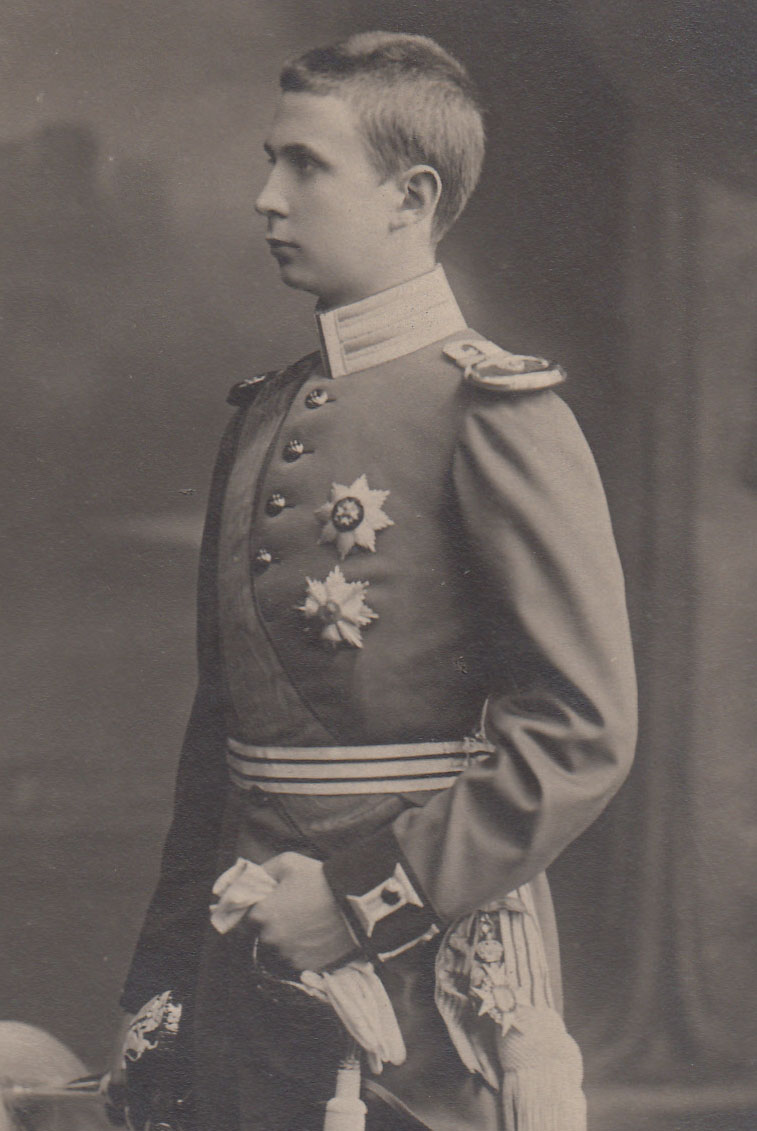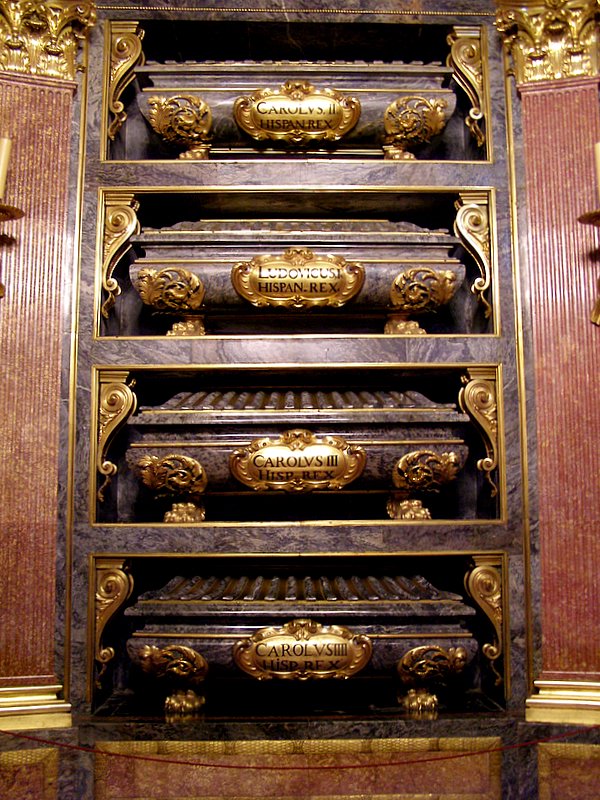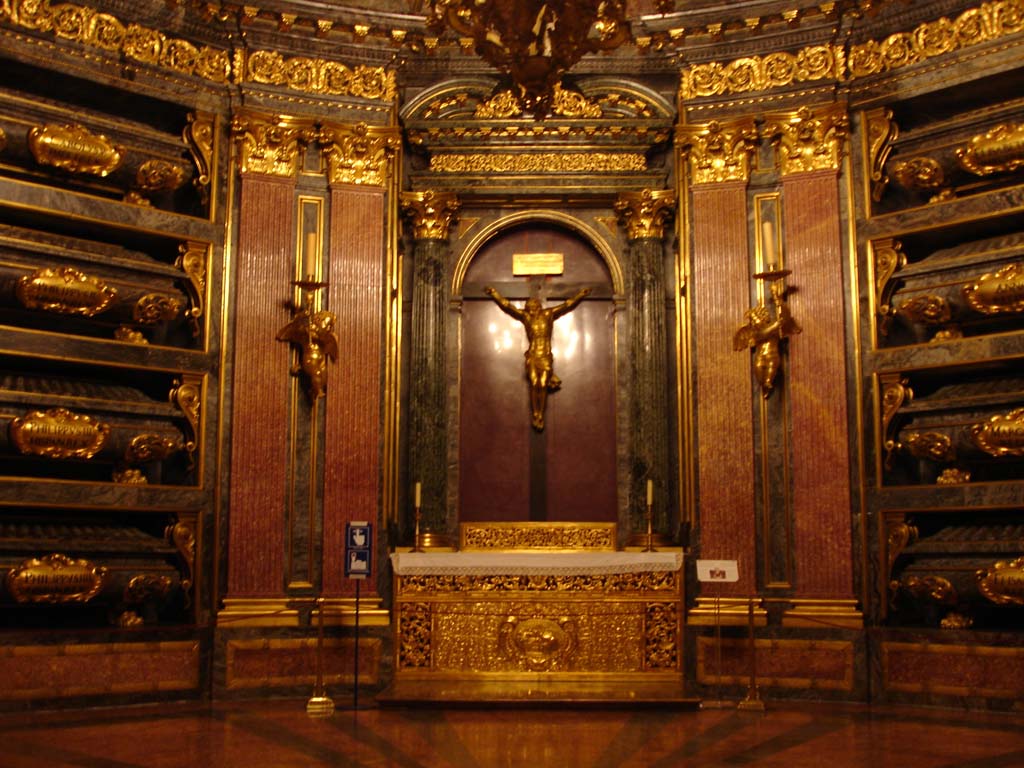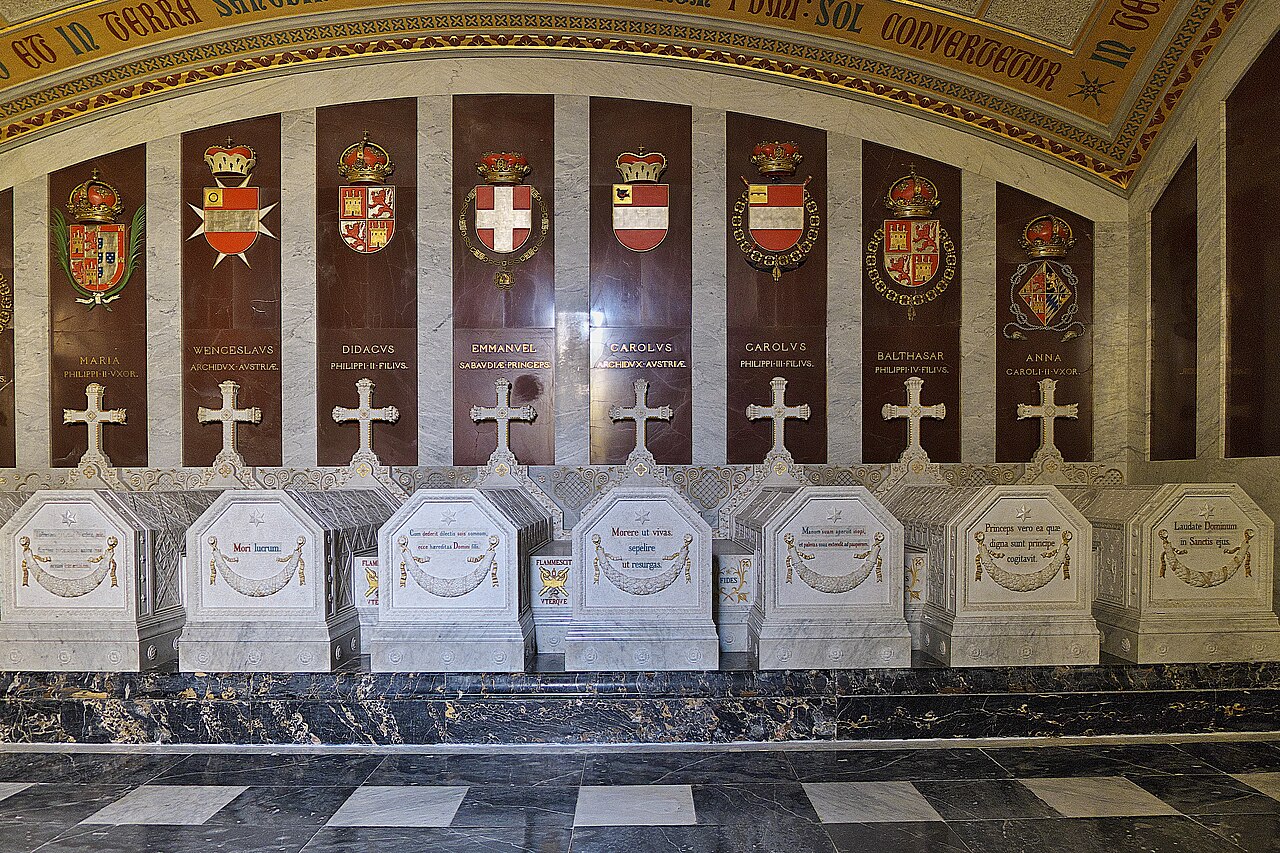by Susan Flantzer
© Unofficial Royalty 2021

Riddarholmen Church; CC BY-SA 3.0, https://commons.wikimedia.org/w/index.php?curid=200571
Riddarholmen Church, which this writer has visited, is located on the islet of Riddarholmen, a short distance from the Royal Palace in Stockholm, Sweden. It is Stockholm’s oldest preserved building and was originally the monastery church for the Greyfriars Monastery, Stockholm founded in 1270 and built with funds donated by King Magnus III Ladulås who is interred in the church. After the Protestant Reformation, Riddarholmen Church became a Lutheran church. A spire was added during the reign of King Johan III of Sweden (reigned 1569 – 1592) but it was destroyed by a lightning strike in 1835 and was replaced with the present cast-iron spire.
Since 1807, Riddarholmen Church has functioned solely as a burial and memorial church. It is maintained by the Office of the Marshal of the Realm and the National Property Board (SFV). The only regular services are a Christmas Day carol service organized by the Stockholm Scout Association and a Catholic Mass organized by the St. Eugenia Roman Catholic Church on June 7, the anniversary of Queen Josefina’s death in 1876. Born Joséphine of Leuchtenberg, Queen Josefina was a granddaughter of Empress Joséphine (Napoleon Bonaparte‘s first wife) from her first marriage to Alexandrede de Beauharnais, Vicomte de Beauharnais, who was guillotined during the French Revolution. Josefina remained Roman Catholic and was given a Catholic funeral.
********************
The Order of the Seraphim

The coats of arms of deceased members of the Order of the Seraphim along the walls with the tombs of King Karl II Knutsson Bonde (on the left) and King Magnus III s Ladulås (on the right) in the foreground; Credit – By Alexandru Baboş Albabos – Own work, CC BY 3.0, https://commons.wikimedia.org/w/index.php?curid=6891868
The Order of the Seraphim, established by King Fredrik I in 1748, is the senior order in Sweden. Awarded in only one class, Knight, it is almost exclusively given to members of the Swedish Royal Family and foreign heads of state. When a Knight of the Order of the Seraphim dies, his or her coat of arms is hung in Riddarholmen Chruch. On the day of the funeral, the bells of Riddarholmen Church are rung continuously from 12:00 noon until 1:00 PM. This bell ringing is called Serafimerringningen (Seraphim Ringing).
********************
Royal Burials

Interior of Riddarholmen Church – Photo © Susan Flantzer
Two medieval Swedish kings were buried at Riddarholmen Church, as well as the fifteen Swedish monarchs and their spouses from King Gustavus II Adolphus the Great (died 1632) to King Gustaf V (died 1950). The only exception is Queen Christina (reigned 1632 – 1654) who abdicated, then converted to Roman Catholicism and was buried at St. Peter’s Basilica in Rome. Riddarholmen Church also has five non-royal burial chapels, built during the 17th century by various Swedish noble families.
Due to the lack of space, Riddarholmen Church is no longer used as a burial site for the Swedish royal family. The burial place of the Swedish royal family is now the Royal Cemetery in Haga Park in Solna Municipality just north of Stockholm, Sweden, near Haga Palace. In 1922, Margaret of Connaught, Crown Princess of Sweden, first wife of the future King Gustaf VI Adolf of Sweden, was the first person buried in the Royal Cemetery in Haga Park. King Gustaf V (died in 1950) and his wife Queen Victoria (died in 1930) were the last burials at Riddarholmen Church.

Plan of Riddarholm Church; Credit – Av Eget arbete – File:Riddarholmskyrkan planritning.jpg, Public Domain, https://commons.wikimedia.org/w/index.php?curid=17632975
1) Tombs of King Magnus III Ladulås and King Karl Knutsson Bonde
2) Gustavian Chapel
3) Karolinska Chapel
4) Bernadotte Chapel
5) Torstensonska Chapel – Built in 1651 for Swedish Field Marshal and military engineer Lennart Torstenson (1603 – 1651)
6) Wachtmeister Chapel – Built in 1654 for Count Hans Wachtmeister of Björkö, Major General and councilor (1609 – 1652). His wife and other members of the Wachtmeister family are also buried in the Wachtmeister Chapel.
7) Armory
8a) Västra Lewenhaupt Chapel and 8b) Östra Lewenhaupt Chapel – Built in 1654 by Gustaf Adolf Lewenhaupt and Carl Mauritz Lewenhaupt who were brothers and both Field Marshals. Other family members are also buried in the chapels.
9) Banér Chapel – Built for Johan Gustafsson Banér (1596 – 1641), a Swedish Field Marshal and councilor
10) Vasaborg Chapel – Built in 1647 by King Gustavus II Adolphus the Great’s illegitimate son Gustaf Gustafsson of Vasaborg (1616 – 1653) who is buried there along with several Swedish military leaders.
11) Sacristy
Royal Burials in the Chancel

Tombs of King Magnus III Ladulås and King Karl Knutsson Bonde in front of the altar – Photo © Susan Flantzer
The first king to be buried at Riddarholmen Church was King Magnus III Ladulås who donated the funds to build the church. His tomb is in the chancel in front of the altar on the left and on his right side is the tomb of King Karl Knutsson Bonde.

Tombs of King Magnus III Ladulås and King Karl Knutsson Bonde – Photo © Susan Flantzer
Royal Burials in the Gustavian Chapel

Tomb of King Gustavus II Adolphus the Great – Photo © Susan Flantzer
The Gustavian Chapel was built from 1629 – 1643. Before King Gustavus II Adolphus the Great left to fight in the Thirty Years’ War, he designated a burial place for himself in Riddarholmen Church. After he was killed in the Battle of Lützen in 1632, construction began on the tomb, which was completed in 1634. His tomb was made of dark veined Italian marble from Italy and bears the Latin inscription GUSTAVUS ADOLPHUS MAGNUS, Gustav Adolf the Great. Close family members were also interred in the Gustavian Chapel.

The coffin of Princess Christina, infant daughter of King Gustavus II Adolphus the Great Photo © Susan Flantzer
Royal Burials in the Gustavian Crypt

Tomb of King Gustaf III in the Gustavian Crypt: Photo Credit – www.findagrave.com
The Gustavian Crypt is not open to the public. Those who died in the 17th century were interred in tin coffins and most of the others were interred in oak coffins covered by velvet embroidered with crowns.
- King Adolf Fredrik of Sweden (1710 – 1771)
- Louisa Ulrika of Prussia, Queen of Sweden (1720 – 1782), wife of King Adolf Frederik of Sweden
- King Gustav III of Sweden (1746 – 1792), assassinated, Unofficial Royalty: Assassination of Gustav III, King of Sweden
- Sofia Magdalena of Denmark, Queen of Sweden (1746 – 1813), wife of King Gustav III of Sweden
- Prince Carl Gustav, Duke of Småland (1782 – 1783), son of King Gustav III of Sweden
- King Carl XIII of Sweden/King Karl II of Norway (1748 – 1818)
- Hedwig Elisabeth Charlotte of Holstein-Gottorp, Queen of Sweden and Norway (1759 – 1818), wife of King Karl XIII of Sweden/ King Karl II of Norway
- Princess Louisa Hedwig of Sweden and Norway (stillborn 1797), daughter of King Karl XIII of Sweden/King Karl II of Norway
- Prince Karl Adolf of Sweden and Norway, Duke of Värmland (born and died 1798), son of
- King Karl XIII of Sweden/ King Karl II of Norway
- Prince Fredrik Adolf of Sweden, Duke of Östergötland (1750 – 1803), son of King Adolf Frederik of Sweden
- Princess Sofia Albertina of Sweden (1753 – 1829), daughter of King Adolf Frederik of Sweden
- King Gustav IV Adolf of Sweden (1778- 1837)
- Prince Gustav Vasa, Count Itterburg (1799 – 1877), son of King Gustav IV Adolf of Sweden
- Prince Carl Gustaf, Grand Duke of Finland, Duke of Småland (1802 – 1805), son of King Gustav IV Adolf of Sweden
- Prince Louis of Vasa (born and died 1832), son of Prince Gustav Vasa, Count Itterburg
- Crown Prince Karl August of Sweden and Norway (1768 – 1810), born Christian August of Schleswig-Holstein-Sonderburg-Augustenburg, adopted by the childless King Karl XIII of Sweden/King Karl II of Norway, was Crown Prince of Sweden and Norway until his death in 1810
Royal Burials in the Karolinska Chapel

Tomb of King Karl XII; Credit – Wikipedia
The Karolinska Chapel was built from 1671 -1743. In 1718, King Karl XII invaded Norway by laying siege to Fredriksten Fortress. On December 11, 1718, while in the trenches close to the perimeter of Fredriksten Fortress, 36-year-old Karl was hit in the head by a projectile that entered the left side of his skull and exited on the right side of his skull, instantly killing him. He was interred in a black marble sarcophagus topped with a crown, a scepter, and a sword, along with the lion skin and the sword of Hercules, all in gilded brass, as symbols of power and strength.

Sarcophagus of Queen Ulrika Eleonora and her husband and successor King Fredrik I; Photo © Susan Flantzer
Also interred in the Karolinska Chapel in a green coal marble sarcophagus, are King Karl XII’s sister and successor Queen Ulrika Eleonora and her husband King Frederik I. Queen Ulrika Eleonora reigned for two years before abdicating in favor of her husband Friedrich of Hesse-Kassel who reigned as King Frederik I.
Royal Burials in the Karolinska Crypt

Sarcophagus of King Karl X Gustav in the Karolinska Crypt; Credit – Wikipedia
Interred in the Karolinska Crypt are two Kings of Sweden and their wives and six children of King Karl XI, five of whom died in infancy. The Karolinska Crypt is not open to the public.
- King Karl X Gustav of Sweden (1622 – 1660)
- Hedwig Eleonora of Holstein-Gottorp, Queen of Sweden (1636 – 1715) , wife of King Karl X Gustav
- King Karl XI of Sweden (1655 – 1697)
- Ulrika Eleonora of Denmark, Queen of Sweden (1656 – 1693), wife of King Karl XI
- Princess Hedvig Sofia of Sweden, Duchess of Holstein-Gottorp (1681 – 1708), daughter of King Karl XI
- Prince Gustav of Sweden (1683 – 1685), son of King Karl XI
- Prince Ulrik of Sweden (1684 – 1685), son of King Karl XI
- Prince Fredrik of Sweden (born and died 1685), son of King Karl XI
- Prince Karl Gustav of Sweden (1686 – 1687), son of King Karl XI
Royal Burials in the Bernadotte Chapel

Bernadotte Chapel – Photo © Susan Flantzer
The founder of the current Swedish royal house, the House of Bernadotte, King Carl XIV Johan, born Jean Baptiste Bernadotte in France, distinguished himself in Napoleon Bonaparte’s army and served as Minister of War. When Napoleon became Emperor of the French, he created Bernadotte a Marshal of France. In 1810, just as he was about to start a new position as governor of Rome, the Swedish Riksdag elected him heir to the childless King Carl XIII. The Riksdag wanted a soldier to be king because of their worries over Russia. In addition, Bernadotte was popular in Sweden because of his considerate treatment of Swedish prisoners during the recent war with Denmark. Bernadotte became king on February 5, 1818, upon the death of King Carl XIII and reigned as King Carl XIV Johan.

Tombs of King Carl XIV Johann and his wife Queen Desideria – Photo by Susan Flantzer
King Carl XIV Johan is interred in the large sarcophagus in the back of the chapel. The sarcophagus is made out of red Swedish porphyry. It measures 10 feet/3.04 meters × 7.5 feet/2.29 meters × 7.9 feet/2.4 meters and weighs 16 tons. In front of King Carl XIV Johann’s sarcophagus is the green marble sarcophagus of his wife Queen Desideria.

Tombs of King Oscar II and his wife Queen Victoria; Credit – Wikipedia
In the walls of the Bernadotte Chapel are niches with brown limestone sarcophagi in which later Swedish kings and queens of the House of Bernadotte were interred.
Royal Burials in the Bernadotte Crypt

An early photo of the Bernadotte Crypt; Credit – Wikipedia
The Bernadotte Crypt, located, below the Bernadotte Chapel, is not open to the public. Several members of the Swedish royal family are interred there.
- Prince Gustaf of Sweden and Norway, Duke of Uppland (1827 – 1852), son of King Oscar I
- Princess Eugenié of Sweden and Norway (1830 – 1889), daughter of King Oscar I
- Prince August of Sweden and Norway, Duke of Dalarna (1831 – 1873), son of King Oscar I
- Therese of Saxe-Altenburg, Princess of Sweden and Norway (1836 – 1914), wife of Prince August of Sweden and Norway, Duke of Dalarna
- Prince Carl Oscar of Sweden and Norway, Duke of Södermanland (1852 – 1854), son of King
- Carl XV of Sweden/King Karl IV of Norway
- Prince Erik of Sweden and Norway, Duke of Västmanland (1889 – 1918), son of King Gustav V
********************
This article is the intellectual property of Unofficial Royalty and is NOT TO BE COPIED, EDITED, OR POSTED IN ANY FORM ON ANOTHER WEBSITE under any circumstances. It is permissible to use a link that directs to Unofficial Royalty.
Works Cited
- The Riddarholmen Church. De Kungliga Slotten. (n.d.). Retrieved November 9, 2021, from https://www.kungligaslotten.se/english/royal-palaces-and-sites/the-riddarholmen-church.html.
- Wikimedia Foundation. (2021, October 19). Riddarholmen Church. Wikipedia. Retrieved November 9, 2021, from https://en.wikipedia.org/wiki/Riddarholmen_Church.
- Wikimedia Foundation. (2021, November 3). Riddarholmskyrkan. Wikipedia. Retrieved November 9, 2021, from https://sv.wikipedia.org/wiki/Riddarholmskyrkan.
- Wikimedia Foundation. (n.d.). Svenska Kungligheters Gravplatser. Wikipedia. Retrieved November 9, 2021, from https://sv.wikipedia.org/wiki/Svenska_kungligheters_gravplatser#Riddarholmskyrkan_i_Stockholm.
















































